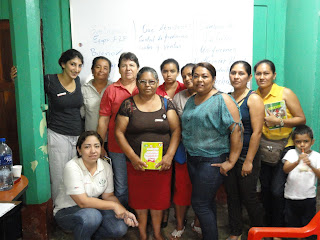The Value of an Informed Decision: Why Cost-Benefit Analysis is Key
For all decisions we make in life, the outcome is usually better if we take the time to consider all of our options before deciding. When contemplating our options, it is important to analyze each of them and figure out the positive and negative aspects that correspond with each possible path. That is where cost-benefit analysis comes in. Cost-benefit analysis is the process through which decisions are evaluated. We may not realize it, but we regularly perform basic cost-benefit analyses throughout our day. Take the following example: "Should I walk to my meeting or take a cab?" Answering that question usually takes less than a minute; but in that time, we consider the benefits (pros) and costs (cons) of each option: A cab will get me there more quickly, but it will also cost me money. Walking will take me longer, but it is free. We consider these factors and then decide what is most important. Maybe the cost of the cab is more than you would like to spend, so you walk, even if it means you might be late. Maybe being late to this meeting would cause other problems, so the cost of the cab is worth it to you. Either way, you consider the outcomes of each decision before acting.
For farmers who participate in our F2F program, the decisions they face each week often have more serious implications. When making decisions about whether to plant a new crop or continue with an old one, process value-added products or stick with raw agricultural products, sell products in one place versus another, or invest in new technologies, there are many factors to consider. Many of our F2F volunteers work to educate farmers, associations, and other organizations on how to perform cost-benefit analyses and make informed decisions.
Formal cost-benefit analyses are used in business decisions around the world and can be rather complex. The first part of a cost-benefit analysis is monetary and requires the ability to predict yields and calculate potential costs, revenues, losses, and profits. We have sent several F2F volunteers to the field to focus on this with our host organizations. F2F volunteers teach how to predict their yields using climate information services, how to keep records of their yields, costs, and revenues, and how to use that information to better predict how much a future decision could cost or benefit them.
Beyond the monetary part of a cost-benefit analysis, F2F volunteers stress the importance of considering the intangible costs and benefits that come with business decisions. This is the other part of a strong cost-benefit analysis: what non-monetary factors will affect the outcome of the decision? Some economists try to attach a monetary value to these factors.
Recently, F2F volunteer Carmen Pacheco-Borden traveled to Panama to work with women in Ngabe-Bugle communities who wanted to learn how to process and can tomatoes. Beyond teaching proper canning and preserving techniques, Carmen also taught the women how to calculate the monetary and non-monetary costs and benefits of processing and canning their tomatoes. The costs included processing the tomatoes, as well as the time and labor inputs involved in the production. Carmen also discussed the possible benefits that could come from processing tomatoes, such as the potential decrease in product loss due to tomato rot and the potential for increased revenues from the higher price a can of processed tomatoes can earn relative to raw tomatoes.
In the case of the Ngabe-Bugle women in Panama, or when deciding whether to walk or take a cab, once all the information (monetary and non-monetary) is compiled and laid out, you can see the total cost and the total benefit of the decision at hand. Regardless of whether it is large or small, complex or simple, all decisions come down to the opportunity cost: “For each possible outcome, what do I have to give up to gain the possible benefit?” In the end, the benefit is only worthwhile if you are willing to give up what is necessary to achieve it.
 |
| F2F Volunteer Laila Salimi taught women farmers in Nueva Guinea, Nicaragua how to perform a cost-benefit analysis. |
Formal cost-benefit analyses are used in business decisions around the world and can be rather complex. The first part of a cost-benefit analysis is monetary and requires the ability to predict yields and calculate potential costs, revenues, losses, and profits. We have sent several F2F volunteers to the field to focus on this with our host organizations. F2F volunteers teach how to predict their yields using climate information services, how to keep records of their yields, costs, and revenues, and how to use that information to better predict how much a future decision could cost or benefit them.
Beyond the monetary part of a cost-benefit analysis, F2F volunteers stress the importance of considering the intangible costs and benefits that come with business decisions. This is the other part of a strong cost-benefit analysis: what non-monetary factors will affect the outcome of the decision? Some economists try to attach a monetary value to these factors.
 |
| F2F Volunteer Carmen Pacheco-Borden with Ngabe-Bugle Women in Panama |
In the case of the Ngabe-Bugle women in Panama, or when deciding whether to walk or take a cab, once all the information (monetary and non-monetary) is compiled and laid out, you can see the total cost and the total benefit of the decision at hand. Regardless of whether it is large or small, complex or simple, all decisions come down to the opportunity cost: “For each possible outcome, what do I have to give up to gain the possible benefit?” In the end, the benefit is only worthwhile if you are willing to give up what is necessary to achieve it.

.png)

Comments
Post a Comment